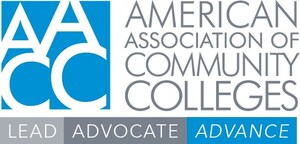New Study Highlights Fundamental Differences Between Community Colleges and For-Profit Institutions
WASHINGTON, Nov. 16, 2010 /PRNewswire-USNewswire/ -- As community colleges continue to be the target of attacks from some in the for-profit college industry, a new policy brief by the American Association of Community Colleges (AACC) highlights important distinctions between the two types of postsecondary institutions.
Just How Similar? Community Colleges and the For-Profit Sector presents data about oversight, service and financing at community colleges and for-profit institutions. The brief illustrates that, while they may offer some of the same educational programs, their missions vary significantly and they serve different populations, resulting in different outcomes. While community colleges work to respond to educational, workforce and community needs, for-profit institutions are often looking toward the bottom line, with accountability to shareholders, not students. Practices of some for-profits now have the industry facing criticism from the federal government, news media and former students.
This brief's findings demonstrate that apples-to-apples comparisons between public and for-profit postsecondary institutions are not only limiting, but also can lead to distortions of performance, according to AACC CEO George R. Boggs.
"The distortions and manipulation of data being promoted by some for-profit advocates really do a disservice to students and families," Boggs said. "Public community colleges provide affordable, quality education to almost half of all U.S. undergraduates, and they have been a lifeline to new skills and jobs during the economic recession. To spend time and resources on false comparisons, doesn't benefit anyone."
Following are key findings from the new AACC brief.
For the full report, see http://www.aacc.nche.edu/Publications/Briefs/Pages/rb11162010.aspx
- About 40% of the 7.3 million students enrolled in community colleges attend full-time, whereas nearly 90% of students at 2-year for-profits are enrolled full-time. Completion rates at 2-year for-profits are, therefore, substantially higher than those at community colleges.
- Because of higher tuition and fees at for-profit institutions, about 90% of students take out loans, compared to the 10% of community college students that take out loans. For-profit institutions have the highest default rates in higher education. According to the College Board's 2010 tuition survey, average yearly tuition at public 2-year colleges averaged $2,713 compared to $13,395 at for-profit institutions.
- Students included in completion or success rates at for-profit 2-year colleges come primarily from programs less than 2 years in length – certificate programs versus associate degrees.
- Federal student aid at for-profits is treated as tuition and fee revenue. Of the 2009 revenues at the largest five for-profit publicly traded corporations, 77% came from Title IV programs.
- In 2009, 16 companies with for-profit colleges were found to have made profits of $2.7 billion. Had those profits been applied to community colleges, enrolled students in fall 2009 could have received enough money to pay for a three-credit course, with money left over for books.
The American Association of Community Colleges is a non-profit organization representing the nation's close to 1,200 community, junior and technical colleges and their more than 12 million students. Community colleges are the largest and fastest growing sector of higher education.
SOURCE American Association of Community Colleges
WANT YOUR COMPANY'S NEWS FEATURED ON PRNEWSWIRE.COM?
Newsrooms &
Influencers
Digital Media
Outlets
Journalists
Opted In





Share this article